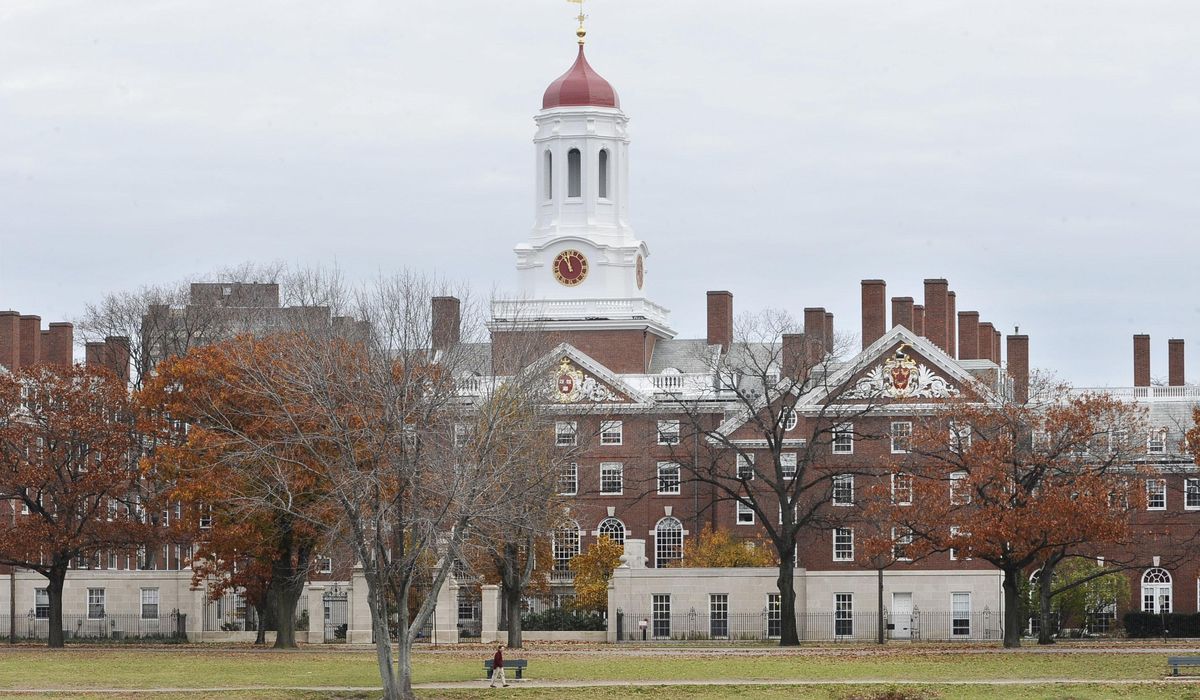


Harvard students can expect to fork over $240,000 for a bachelor’s degree in women’s studies, while it costs about $20,000 to finish beauty school. But only one of these programs is subject to the Biden administration’s crackdown on unaffordable education debt.
The Department of Education is being accused of a political double-standard for its gainful-employment rule, a mandate aimed at improving financial accountability and transparency that targets for-profit colleges and career-training programs, not the pricey Ivy Leagues or other nonprofit universities.
The push to hold for-profit universities accountable comes with President Biden approving $117 billion in student-loan debt, a confluence of events that Jason Altmire, president and CEO of the Career Education Colleges and Universities, called “hypocritical.”
“For the administration to take the approach of just forgiving the loans of people across higher education, and then on the other hand coming after the for-profit sector and saying that somehow there’s going to be a different and more punitive approach — we believe that is hypocritical,” Mr. Altmire told The Washington Times.
The regulations taking effect July 1 also encompass non-degree certificate programs at for-profit and nonprofit universities, but “for the most part, this is directed at for-profit schools,” he said.
“We believe any accountability measures should apply to all schools in all sectors of education so that all students can benefit from those accountability measures,” said Mr. Altmire, a former Democratic congressman from Pennsylvania.
Under the rule, programs at for-profit schools whose students receive federal aid must pass two tests: First, show that their graduates earn enough to pay off their loans, and, second, that they make at least as much as workers in their state with only a high school diploma.
Programs that fail the same metric twice in a three-year period will be ineligible for federal student aid. About 32,000 for-profit and non-degree programs enrolling 2.9 million students who receive federal aid each year would fall under the rule.
The regulations “will protect nearly 700,000 students annually who would otherwise enroll in one of nearly 1,700 low-performing programs,” the Education Department said.
Two for-profit institutions have sued to stop the regulations, so far without success. A federal judge last week denied motion to block the rule brought by the Ogle School and Tricoci University of Beauty Culture.
Certainly the college-debt burden is a problem. The federal student loan debt totaled $1.727 trillion as of the fourth quarter of 2023, down from $1.732 trillion the previous year for the first-ever decline in student debt.
Whether for-profit programs are to blame is another question. The latest National Center for Education Statistics data from 2016-17 showed that 63% of for-profit college students took out loans versus 57% of private nonprofit students and 40% at public colleges.
“Graduates of for-profit colleges are more likely to have higher debt,” said the BestColleges analysis updated May 30. “Half of graduates (50.7%) of private for-profit schools borrowed $40,000 or more for school.”
The idea of requiring for-profit scholastic programs to prove their return-on-investment value isn’t new. The Obama administration released similar regulations in 2011 and 2014, citing the 1965 Higher Education Act’s requirement that colleges “prepare students for gainful employment.”
The 2011 rule was thrown out by the courts. The 2014 revision was rescinded by the Trump administration in 2017, but provided a year’s worth of data that became the basis of an eye-opening 2022 report by the Texas Public Policy Foundation.
“Lessons From Gainful Employment” by senior policy analyst Andrew Gillen found that when the same standards were applied to all universities, 51% of programs at private nonprofit colleges and 39% of those public nonprofits failed to make the grade. Only 11% of for-profit programs flunked the test.
“By excluding degree programs at public and private nonprofit universities, gainful employment missed the vast majority of programs that leave their students with excessive student loan debt,” said the report.
Now a research fellow at the Cato Institute, Mr. Gillen said the same set of rules should apply to the Harvards and Yales as well as the Strayers and Universities of Phoenix.
“In my opinion, what you should do in a situation like that is you just set standards for everybody and let the chips fall where they may,” Mr. Gillen told The Washington Times. “If it disproportionately affects the for-profits because they’re more predatory, so be it, but if it disproportionately affects the non-profits because they’re more predatory these days, then that’s just the way it is.”
He also gave a hat-tip to the Biden administration for applying the rules to individual programs, not entire schools.
“We should definitely be approaching accountability in education somewhat like the gainful-employment regulations do in the sense of trying to identify programs where students are borrowing too much relative to what they earn afterward,” Mr. Gillen. “Make it so that future cohorts of students don’t fall into that trap. I think that’s very healthy.”
The regulations also come with many higher-education institutions struggling to survive amid declining student enrollment.
From 2004-20, nearly 12,000 U.S. colleges shut down. A sample of 467 schools examined by the State Higher Education Executive Office and the National Student Clearinghouse Research Center found that 78% were for-profits and 21% were private nonprofits.
Will the Biden regulations doom for-profit schools? Mr. Gillen doesn’t think so, citing the greater ability of the for-profits to adapt and overcome.
“I think there will probably be a bunch of for-profit programs that do fail, but I don’t think this is going to be an existential threat,” Mr. Gillen said. “Because the for-profits have actually lately been focusing on higher-return programs in general.”
• Valerie Richardson can be reached at vrichardson@washingtontimes.com.
